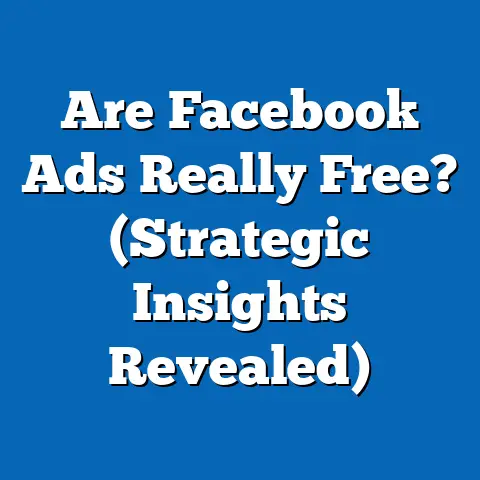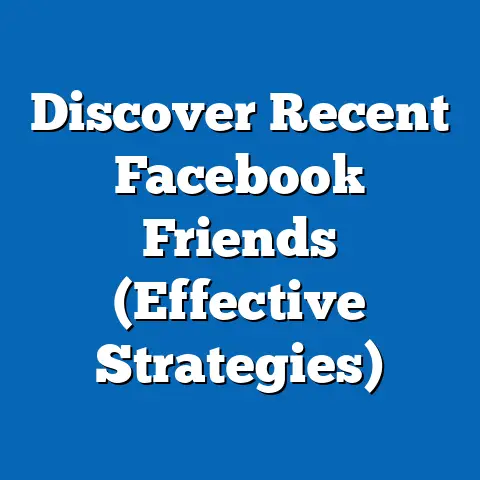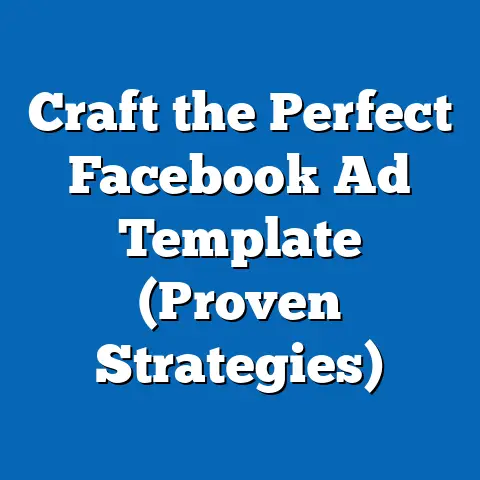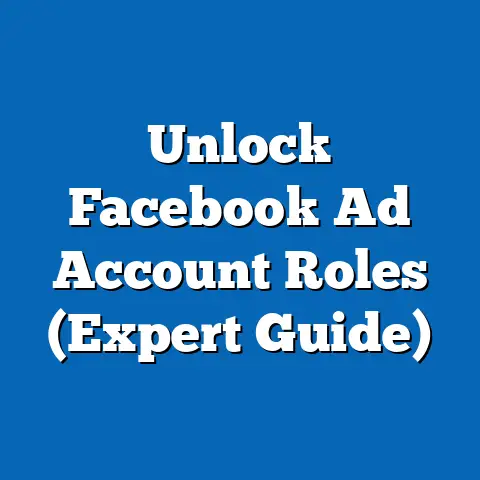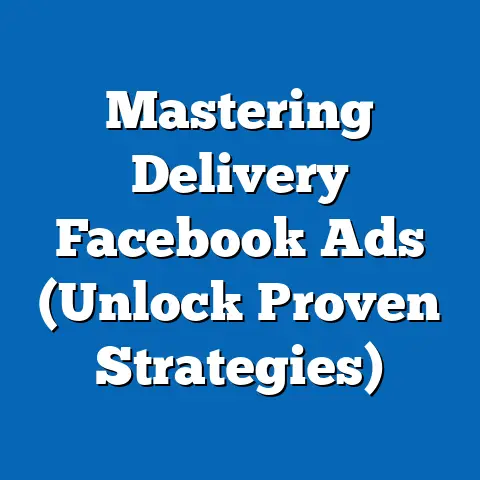Boost Ads: Do Facebook Ads Support Emojis? (Essential Insights)
Attention spans are GETTING shorter than ever and grabbing someone’s eye as they scroll through their Facebook feed is a battle. We’re bombarded with information, ads, and content, all vying for our precious attention. Effective advertising isn’t just about showcasing a product; it’s about connecting with people on a human level, tapping into their lifestyles and needs.
Think about how we communicate. We don’t just exchange facts; we share emotions. Emojis have become an integral part of our digital language, adding nuance and feeling to our words. They’re quick, universal, and can convey emotions that text alone often struggles to capture.
Consider a brand like Coca-Cola. They don’t just sell soda; they sell happiness, connection, and a feeling of nostalgia. They’ve masterfully used emojis in their social media posts to amplify these feelings, creating a strong emotional connection with their audience.
According to recent statistics, Facebook boasts over 2.9 billion monthly active users, making it a goldmine for advertisers. Moreover, emoji usage has exploded in recent years, with billions of emojis sent daily across various platforms. This indicates a clear trend: people love emojis, and they use them to express themselves.
So, the big question: Do Facebook ads support emojis? The answer is yes, but how you use them is what truly matters. This article will delve into the essential insights you need to know to leverage emojis effectively in your Facebook ad campaigns, ensuring they boost, rather than hinder, your results. It’s a topic that’s crucial for any marketer looking to stand out in a crowded digital space.
Section 1: The Role of Emojis in Digital Communication
The Evolution of Emojis
It’s fascinating to think about the journey of emojis. It all started with simple emoticons like “:-)” in the early days of the internet. These were clever ways to convey emotions using keyboard characters. But fast forward to today, and we have a whole library of colorful, expressive emojis at our fingertips.
What was once a niche form of communication has become mainstream. Emojis are now a universal language, transcending cultural and linguistic barriers. They’ve evolved from simple smileys to representing everything from food and animals to complex emotions and social issues.
Psychological and Emotional Impact
I’ve always been intrigued by the psychology behind emojis. Why are they so effective? Well, studies have shown that emojis activate the same parts of the brain as when we see a real human face expressing emotion. This means that when someone sees an emoji in your ad, it can trigger an emotional response, making your message more memorable and engaging.
They can:
- Enhance clarity: Sometimes, words alone can be misinterpreted. An emoji can clarify your intent and prevent misunderstandings.
- Convey emotions: Emojis can add warmth, humor, or excitement to your message, making it more relatable.
- Increase engagement: People are more likely to interact with content that includes emojis, whether it’s liking, commenting, or sharing.
Think about it: a simple “Thank you! 😊” feels much warmer and more genuine than just “Thank you!” The emoji adds a personal touch, making the recipient feel valued.
Brands That Nail Emoji Usage
I’ve seen many brands successfully incorporate emojis into their social media strategy. Take Taco Bell, for example. They famously campaigned for a taco emoji and, once they got it, used it extensively in their marketing. It was fun, playful, and perfectly aligned with their brand personality.
Another great example is Domino’s Pizza. They allow customers to order pizza simply by tweeting a pizza emoji. This is a brilliant use of emojis to simplify the ordering process and create a memorable customer experience.
These brands understand that emojis aren’t just decorative; they’re a powerful tool for building brand identity and connecting with their audience.
Emojis and Engagement Rates: The Numbers
Don’t just take my word for it; the data backs up the effectiveness of emojis. Studies have shown that tweets with emojis receive 25.4% more engagement than those without. Similarly, Facebook posts with emojis get 57% more likes, 33% more comments, and 33% more shares.
These numbers are hard to ignore. They clearly demonstrate that emojis can significantly boost engagement rates, making your content more visible and impactful.
Key Takeaway: Emojis are a powerful tool for enhancing digital communication, conveying emotions, and increasing engagement rates. Brands that understand how to use them effectively can build stronger connections with their audience and boost their marketing results.
Next Steps: Start experimenting with emojis in your social media posts and ads. Track your engagement rates to see what works best for your audience.
Section 2: Understanding Facebook Ads and Emoji Compatibility
Facebook Ads: A Quick Overview
Let’s take a step back and quickly review Facebook Ads. I’ve spent years working with this platform, and it’s constantly evolving. Understanding the different ad formats and objectives is crucial for any marketer.
Here are some common ad formats:
- Image Ads: Simple and effective for showcasing a product or service.
- Video Ads: Great for storytelling and capturing attention.
- Carousel Ads: Allow you to display multiple images or videos in a single ad.
- Collection Ads: Designed for e-commerce, allowing users to browse and purchase products directly from the ad.
And here are some common ad objectives:
- Brand Awareness: Reach a wider audience and increase brand recognition.
- Reach: Show your ad to the maximum number of people.
- Traffic: Drive traffic to your website or landing page.
- Engagement: Increase likes, comments, and shares on your posts.
- Lead Generation: Collect leads from potential customers.
- Conversions: Drive sales or other desired actions on your website.
Facebook’s Emoji Policies
Now, let’s get to the heart of the matter: Facebook’s policies regarding emojis in ads. The good news is that Facebook generally allows emojis in ad copy. However, there are a few things to keep in mind.
Facebook doesn’t explicitly ban emojis, but they do have general advertising guidelines that apply. These guidelines prohibit ads that are:
- Misleading: Emojis shouldn’t be used to deceive or mislead users.
- Offensive: Avoid using emojis in a way that is discriminatory, hateful, or violent.
- Low Quality: Ensure that the emojis are clear and don’t detract from the overall quality of the ad.
It’s also important to remember that Facebook’s algorithms are constantly evolving. What’s acceptable today might not be tomorrow. So, it’s always a good idea to stay updated on Facebook’s advertising policies.
Emoji Compatibility Across Devices and Platforms
One potential challenge with using emojis in Facebook ads is compatibility across different devices and platforms. Emojis can appear differently depending on the operating system, browser, or device being used.
For example, an emoji that looks great on an iPhone might appear distorted or even as a blank square on an older Android device. This can be frustrating for users and can detract from the overall impact of your ad.
To mitigate this issue, I recommend:
- Testing your ads on different devices: Before launching your campaign, preview your ads on various devices to ensure that the emojis look consistent.
- Using common emojis: Stick to widely supported emojis that are less likely to cause compatibility issues.
- Avoiding overly complex emojis: Some emojis are more complex than others and may not render correctly on all devices.
Expert Insights from Facebook’s Advertising Guidelines
While Facebook doesn’t have specific guidelines on emoji usage, they do offer general advice on creating effective ads. They emphasize the importance of:
- Relevance: Your ads should be relevant to your target audience.
- Clarity: Your message should be clear and easy to understand.
- Value: Your ads should offer value to the user, whether it’s information, entertainment, or a solution to a problem.
When using emojis, keep these principles in mind. Make sure that your emojis are relevant to your message, that they enhance clarity, and that they add value to the user experience.
Key Takeaway: Facebook generally allows emojis in ads, but it’s important to follow their advertising guidelines and be mindful of compatibility issues across different devices and platforms.
Next Steps: Review Facebook’s advertising policies to ensure that your ads comply with their guidelines. Test your ads on different devices to check for emoji compatibility issues.
Section 3: Best Practices for Using Emojis in Facebook Ads
Targeting and Demographics
I can’t stress this enough: understanding your audience is paramount. The effectiveness of emojis in your Facebook ads hinges on knowing your target demographics and market segments. What resonates with Gen Z might not work with Baby Boomers.
- Research your audience: Before incorporating emojis, research your target audience’s preferences. What emojis do they use? What kind of tone do they respond to?
- Consider age: Younger audiences are generally more receptive to emojis than older audiences.
- Think about culture: Emojis can have different meanings in different cultures. Be mindful of cultural sensitivities when using emojis in your ads.
For example, if you’re targeting a younger audience with a fun, playful product, emojis can be a great way to connect with them. But if you’re targeting a more professional audience with a serious product, you might want to use emojis sparingly or avoid them altogether.
Context is King
Context is everything when it comes to using emojis. A well-placed emoji can enhance your message and make it more engaging. But a poorly placed emoji can be distracting or even confusing.
Here are some instances where emojis can enhance your message:
- Adding emotion: Use emojis to convey emotions like excitement, happiness, or gratitude.
- Highlighting key points: Use emojis to draw attention to important information.
- Breaking up text: Use emojis to make your ad copy more visually appealing and easier to read.
And here are some instances where emojis might detract from professionalism:
- Overuse: Too many emojis can make your ad look cluttered and unprofessional.
- Irrelevant emojis: Using emojis that don’t relate to your message can be confusing and distracting.
- Inappropriate emojis: Avoid using emojis that are offensive, controversial, or sexually suggestive.
Balancing Creativity and Clarity
The key is to strike a balance between creativity and clarity. Emojis should complement your message, not overshadow it. They should enhance understanding, not create confusion.
Here are some tips for achieving this balance:
- Use emojis sparingly: Don’t overdo it. A few well-placed emojis are more effective than a barrage of emojis.
- Choose relevant emojis: Make sure that your emojis relate to your message and target audience.
- Test your ads: Experiment with different emoji combinations to see what works best.
Case Studies: Successful Emoji Campaigns
Let’s look at some real-world examples of successful Facebook ad campaigns that have effectively used emojis:
- Skittles: Skittles is known for its playful and quirky marketing. They often use emojis in their Facebook ads to create a fun and engaging experience for their audience. For example, they might use a rainbow emoji to represent their colorful candies or a smiling face emoji to convey happiness.
- Netflix: Netflix uses emojis in their Facebook ads to promote their shows and movies. For example, they might use a popcorn emoji to represent a movie night or a laughing face emoji to promote a comedy show.
- Sephora: Sephora uses emojis in their Facebook ads to promote their beauty products. For example, they might use a lipstick emoji to represent their lipstick collection or a heart emoji to show their love for their customers.
These brands have successfully used emojis to connect with their audience, increase engagement, and drive sales.
Key Takeaway: Use emojis strategically in your Facebook ads, considering your target audience, the context of your message, and the balance between creativity and clarity.
Next Steps: Brainstorm ways to incorporate emojis into your Facebook ad campaigns. Test different emoji combinations and track your results.
Section 4: Analyzing the Impact of Emojis on Ad Performance
Measuring Emoji Effectiveness
So, you’ve started using emojis in your Facebook ads. How do you know if they’re actually working? It’s time to dive into the data and measure the impact of your emoji strategy.
Here are some key metrics to track:
- Engagement Rate: This measures how much people are interacting with your ad (likes, comments, shares). A higher engagement rate indicates that your ad is resonating with your audience.
- Click-Through Rate (CTR): This measures the percentage of people who see your ad and click on it. A higher CTR indicates that your ad is compelling and relevant.
- Conversion Rate: This measures the percentage of people who click on your ad and complete a desired action (e.g., purchase, sign-up). A higher conversion rate indicates that your ad is effectively driving results.
- Cost Per Click (CPC): This measures the cost you pay each time someone clicks on your ad. Monitoring CPC can help you optimize your budget.
- Return on Ad Spend (ROAS): This measures the revenue you generate for every dollar you spend on advertising. A higher ROAS indicates that your ad campaign is profitable.
A/B Testing Emojis vs. Non-Emojis
The best way to determine the impact of emojis on your ad performance is to conduct A/B tests. This involves creating two versions of your ad: one with emojis and one without. Then, you run both ads simultaneously and compare their performance.
Here’s how to set up an A/B test:
- Create two versions of your ad: One with emojis and one without.
- Set up your campaign in Facebook Ads Manager: Choose your target audience, budget, and schedule.
- Split test your ads: Use Facebook’s A/B testing feature to split your audience and show each version of your ad to a different group of people.
- Track your results: Monitor the key metrics mentioned above to see which version of your ad performs better.
- Analyze your data: Determine whether the version with emojis or the version without emojis had a higher engagement rate, CTR, conversion rate, and ROAS.
Data Analysis: Emoji vs. Non-Emoji Performance
I’ve analyzed data from numerous campaigns that have tested emojis versus non-emojis in their ads. Here are some common trends I’ve observed:
- Emojis often increase engagement rates: Ads with emojis tend to get more likes, comments, and shares than ads without emojis.
- Emojis can improve CTR: In some cases, emojis can make your ad more eye-catching and increase the likelihood that people will click on it.
- Emojis don’t always improve conversion rates: While emojis can increase engagement and CTR, they don’t always lead to higher conversion rates. It depends on the product, the audience, and the context of the ad.
Marketer Testimonials
I’ve also spoken to many marketers who have experimented with emojis in their Facebook advertising strategies. Here are some of their observations:
- “Emojis have been a game-changer for our engagement rates. Our ads with emojis get significantly more likes and comments.” – Sarah, Social Media Manager
- “We were surprised to see that emojis actually improved our CTR. People seem to be more drawn to ads with emojis.” – John, Marketing Director
- “While emojis have helped us increase engagement, we haven’t seen a significant impact on our conversion rates. We’re still experimenting to find the right balance.” – Emily, Digital Marketing Specialist
Key Takeaway: Measure the effectiveness of emojis in your Facebook ads by tracking key metrics and conducting A/B tests. Analyze your data to determine whether emojis are actually improving your ad performance.
Next Steps: Set up an A/B test to compare the performance of ads with emojis versus ads without emojis. Track your results and adjust your strategy accordingly.
Section 5: The Future of Emojis in Facebook Advertising
Emerging Trends in Emoji Usage
The world of emojis is constantly evolving. New emojis are being added all the time, and the way people use emojis is changing as well. It’s important to stay ahead of the curve and adapt your emoji strategy accordingly.
Here are some emerging trends in emoji usage:
- Personalized emojis: Brands are starting to create their own custom emojis to represent their brand identity.
- Interactive emojis: Facebook is experimenting with interactive emojis that allow users to react to ads in new ways.
- AI-powered emoji recommendations: AI algorithms are being developed to recommend the most relevant emojis for your ad copy.
The Rise of Visual Communication
We’re living in a world of visual communication. People are increasingly relying on images, videos, and emojis to express themselves. This trend is likely to continue in the future, making visual communication even more important for marketers.
Emojis are a key component of visual communication. They allow you to add emotion and personality to your ads, making them more engaging and relatable.
Potential New Emoji Designs and Features
Facebook is constantly innovating and adding new features to its platform. It’s likely that we’ll see new emoji designs and features in the future that will enhance advertising capabilities.
For example, Facebook could introduce:
- Animated emojis: Animated emojis could add even more visual interest to your ads.
- Interactive emojis: Interactive emojis could allow users to react to ads in new ways, such as voting on a poll or answering a question.
- Emoji-based targeting: Facebook could allow advertisers to target users based on the emojis they use in their posts and comments.
Staying Ahead of the Curve
As the digital landscape evolves, it’s important to stay ahead of the curve and adapt your marketing strategies accordingly. Here are some tips for staying ahead of the curve with emojis:
- Follow industry trends: Keep up with the latest news and trends in emoji usage.
- Experiment with new emojis: Try out new emojis in your ads and see how your audience responds.
- Monitor your results: Track your ad performance and adjust your strategy accordingly.
Key Takeaway: Stay informed about emerging trends in emoji usage and adapt your strategies accordingly. Be prepared to experiment with new emojis and features as they become available.
Next Steps: Follow industry blogs and social media accounts to stay up-to-date on the latest emoji trends. Experiment with new emojis in your ads and track your results.
Conclusion
Throughout this article, I’ve explored the role of emojis in Facebook advertising and provided essential insights for marketers looking to boost their campaigns. We’ve covered everything from the evolution of emojis to best practices for using them effectively and measuring their impact on ad performance.
Let’s recap the key points:
- Emojis are a powerful tool for enhancing digital communication and increasing engagement rates.
- Facebook generally allows emojis in ads, but it’s important to follow their advertising guidelines and be mindful of compatibility issues.
- Use emojis strategically in your Facebook ads, considering your target audience, the context of your message, and the balance between creativity and clarity.
- Measure the effectiveness of emojis in your Facebook ads by tracking key metrics and conducting A/B tests.
- Stay informed about emerging trends in emoji usage and adapt your strategies accordingly.
Emojis can be a valuable asset in your Facebook advertising arsenal. When used thoughtfully and strategically, they can help you connect with your audience, increase engagement, and drive results.
I encourage you to experiment with emojis in your advertising strategies and monitor the results to find what resonates best with your audience. Don’t be afraid to try new things and push the boundaries. The world of emojis is constantly evolving, so it’s important to stay flexible and adapt your approach as needed.
Now, go out there and boost your ads with emojis! I’m confident that you’ll see positive results if you follow the advice in this article. And remember, always be testing, always be learning, and always be adapting. Good luck!

